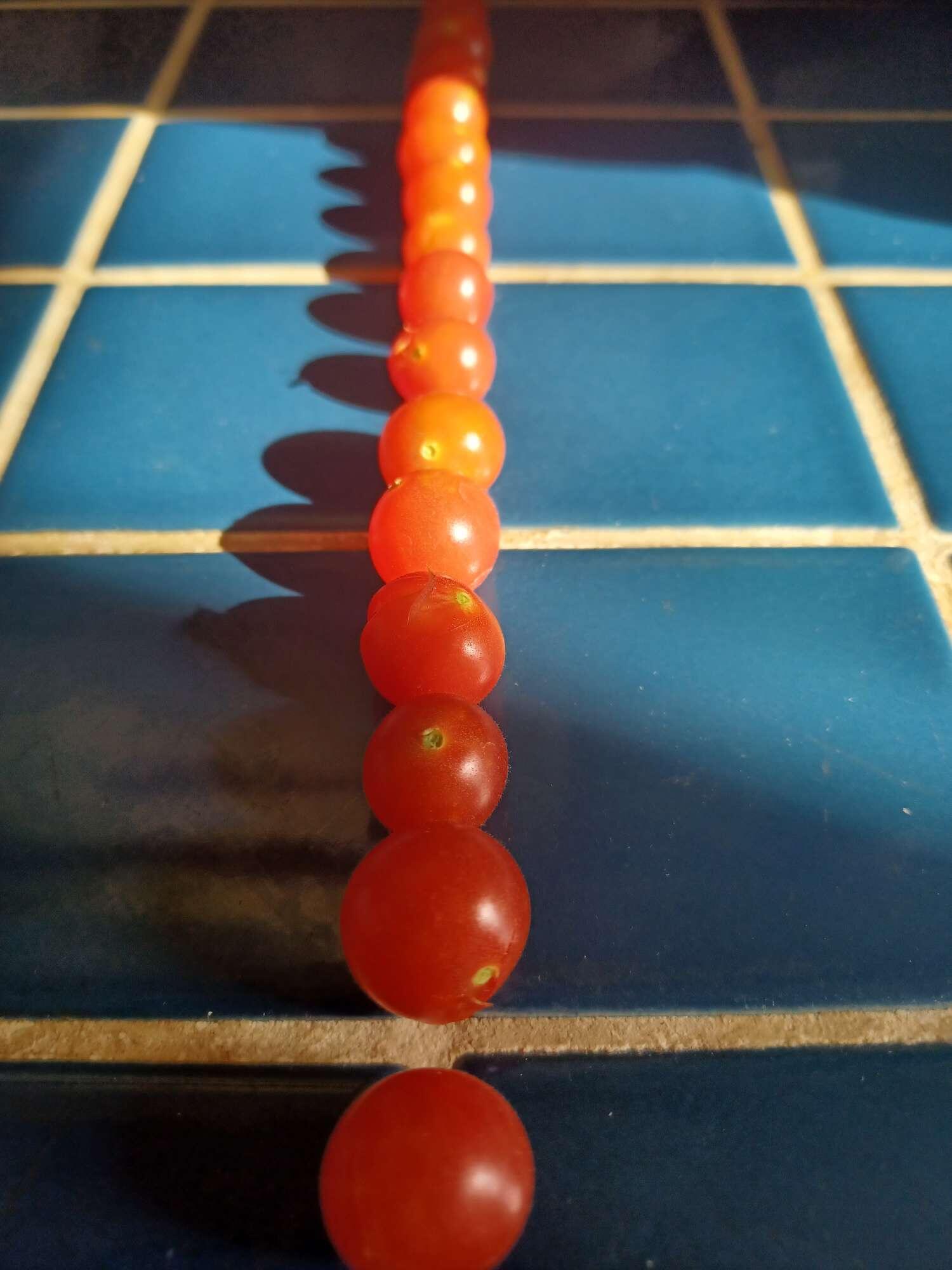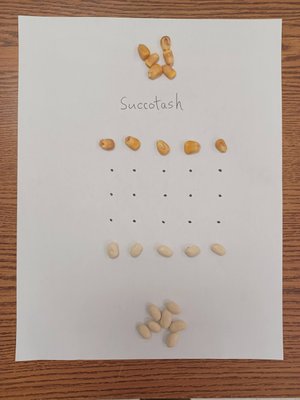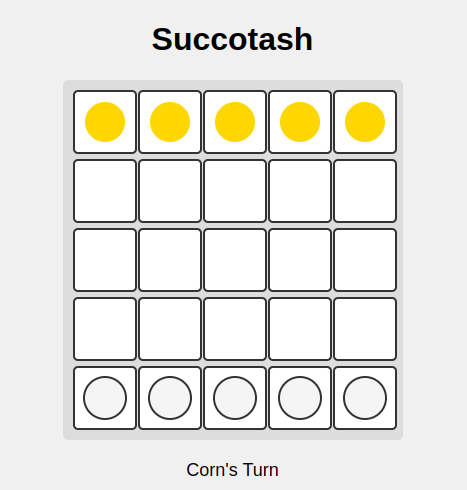The Origin Story
Succotash began with a simple observation. One day, my wife lined up our little tomatoes on the counter, I snapped a photo and put it on Nostr and it was auto-bridged over to Hive. This simple note sparked something unexpected.

A Hiver suggested the photo looked like a game. That was enough to get my curiosity going. The round tomatoes nestled in the tile grooves reminded me of Chinese checkers, while the grid brought to mind Hex - the game John Nash played. I wondered if a square-grid version might be viable.
After some research, I discovered that Hex is part of a family of "Connection games," including one called Tak that seemed particularly interesting and simple. I like interesting, and I really like simple.
The Game Takes Shape
While a square grid connection game wasn't new, I wanted something that could be played with everyday items. Tak requires stacking "stones" or standing them on edge, which wouldn't work with round tomatoes. Then I noticed some dried corn kernels and beans nearby...
On a sheet of paper, I drew out a 5 x 5 grid of dots, lined up five corn kernels on one side in a "home row" and 5 beans on the other. Remembering a game where two sides of toy Army men met after a series of moves, I wanted to incorporate some type of combat or conquest. So I started experimenting, moving kernels and beans, and the game began to take shape.
How to Play
This is a person-vs-person game. The objective is to connect one side (your home row) to your opponent's side. The connection can be a straight line or include diagonal paths.
Basic Rules:
- Two players take turns moving one piece at a time
- Movement is limited to one spot forward/back or sideways (NSEW)
- Opponents can occupy the same spot ("co-squatting")
- Combat occurs when a piece moves to a spot with an opponent
- Conquest happens when one side outnumbers the other 2-to-1
- Conquered pieces return to their home row
- First to connect their home row to the opposite side wins

A Hawaiian girl nearby saw what I was doing and looked at me with a very puzzled look. "It's a game. Want to play it?" We gave Succotash the first ever test run. Later that day, my wife and I sat down on the floor and played the game again. Seemed fun enough.
I announced Succotash on Hive. After some suggestions in the comments, I began to build the online version. The initial version 0.0.1 looked like this:

Playing the game, I wanted simplicity but I felt one more element was needed. Plus, I wanted tomatoes. So, I added the chance to earn a sixth player piece, a "Tomato." If you move into both corners of your opponent's home, you earn a sixth game piece. Your Tomato then pops into the center square and you play normally with six pieces.
I'm really pleased with the digital version. It's only one html file and can actually be downloaded and played offline. But, truth be told, I still prefer the real corn kernels and beans on paper. My wife agrees.

For more details about the game's creation and evolution, check out this Hive article.
Why "Succotash"?
Initially, I wanted a tomato-themed name, but since I was using using corn and beans, "Succotash" seemed perfect - it's a dish that combines corn, beans, and vegetables. I considered calling it the "Texas Caviar Game" (since that recipe has tomatoes along with corn and beans, and because it's delicious), but "Succotash" just sounds better. Plus, adding tomatoes to succotash sounds yummy as well.
Keeping It Simple
A big goal was to keep the game simple. All you need is:
- A 5 x 5 grid
- 5 pieces of something and 5 pieces of something else
While I used corn kernels and beans, you could easily use shells/legos, pennies/paperclips, nuts/stones, or whatever you have handy. There is even a way to implement the randomization of an attack, with or without dice, see the Rules. The game could literally be played in the sand with sticks and rocks, like we used to do as kids.